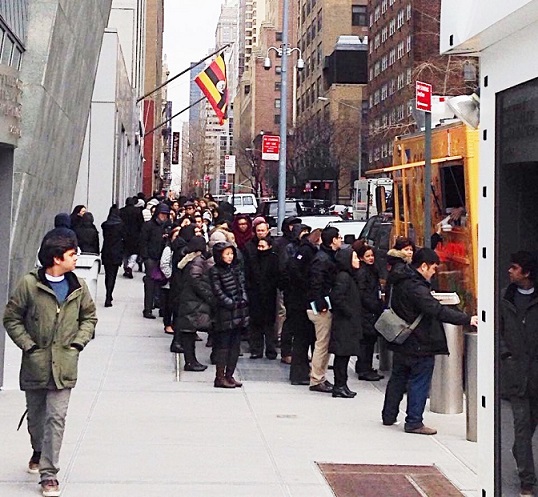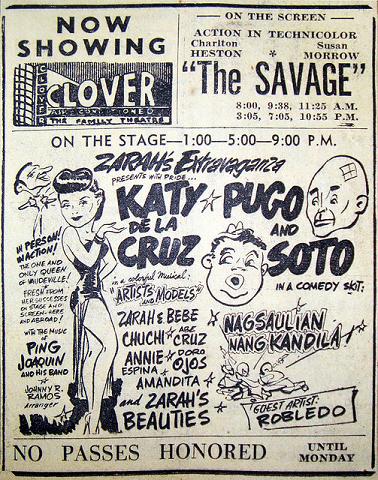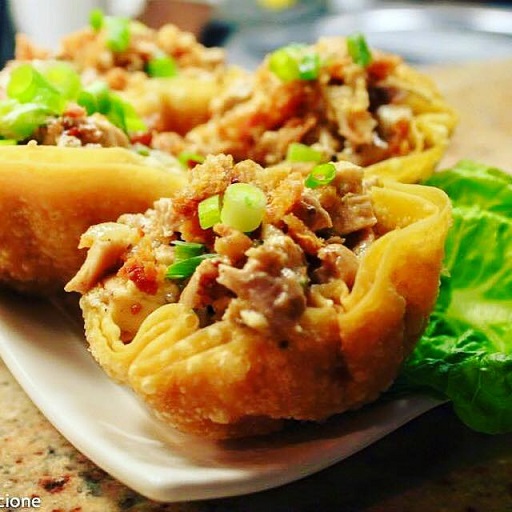Sisig City’s yellow truck wheels Filipino food to the 5 boroughs

Sisig lovers from the United Nations, where there are many FilAm staffers, make a beeline for the yellow truck.
In the indie film “Chef,” Jon Favreau’s character finds himself flipping Cuban sandwiches in a food truck after he quits his restaurant job as a head chef because of a disagreement with the crusty restaurant owner played by Dustin Hoffman.
Let’s just say that Manny Imperial is fortunate to have both: a sit-down eatery on Staten Island called Phil-Am Kusina and the Sisig City food truck that roams the five boroughs of New York. It is some kind of a juggling act for this young restaurateur with a business degree from Baruch College, but for now Sisig City gets the lion’s share of his attention.
“I waited several years to get a permit,” said Manny, 30, in an interview with The FilAm. “When I got it after so many years on the waitlist, I couldn’t believe it. Is this for real?”
Sisig City officially opened in January as the first Filipino food van in New York City. Its first stop: Woodside, Queens. Manny’s family pioneered in the Filipino grocery business around the East Coast, and its Phil-Am Grocery chain has an established footprint in Queens. That’s where Sisig City’s mustard yellow six-wheeler was first spotted by Filipinos who promptly posted photos on Facebook because of its novelty appeal. “I’ll post this because I did not get to eat Sisig after lining up for 30 minutes at the Sisig City food truck!,” writes Robert William Magat.
The truck is painted with images of a New York skyscraper, a Philippine flag, and a carabao. The blurb “Big Filipino Flavor” says it all. By Manny’s reckoning, the Sisig is sure to attract at least two kinds of demographics: Filipinos with a longing for their favorite comfort food, and non-Filipinos who are intrigued by this dish made of chopped pig parts and sautéed in onions. Others are simply about the food truck experience.
“We had a lot of food traffic on our first day in Queens,” he said. “But just to be sure, I also invited a lot of my friends and cousins. Turnout was great.”
Sisig City has been spotted around NYC, specifically in front of schools and hospitals, where FilAm students and nurses form the head of the line. The van offers four standard rice bowl dishes, although there can be other dishes on a given week. The Pork Sisig, Chicken Sisig, Grilled Liempo, and Lechon Kawali come with garlic rice and Pickled Achara for a fixed price of $9. Sisig Tacos and Sisig Nachos are also available. Dessert is a choice of Fried Turon and Buko Pandan.
“I notice that everyone loves to try Filipino food, and they want to know what Sisig is,” said Manny as he talked about his typical customers. “Others, when they see a new food truck, they say let’s go and try it.”
Sisig City stays in a particular location for about four hours, usually from 10:30 a.m. to 2:30 p.m. The schedule is posted on their Facebook page. The truck has a permit to park anywhere, except in certain high-traffic spots, like Times Square or Penn Station.
The food truck may seem like a straightforward operation but the cost can be discouraging to a fainthearted entrepreneur. A 2014 Forbes Magazine article says the NYC Department of Health “issued 5,100 mobile-food-vending permits, of which 500 belong to food trucks.” A permit can be anywhere from $15,000 to $20,000 for two years.
Manny was tightlipped about the cost but detailed where expenses can hit the owner: permits, buying a used food truck, revamping the truck to set up a kitchen with a flat-top griddle, a fridge and a table, and designing the truck. “Since it’s an old truck I needed new engine,” he said. “Yeah, it’s (food truck business) expensive.”
The idea of a food truck has crossed Manny’s mind — and stayed there for years — when it became a foodie craze in California. He was not really obsessed with being the first in New York, but he has seen how the food business can be fickle and seasonal. The grocery business, for example, is experiencing a downturn because FilAms are seeing a generation that “does not cook anymore.” He thought why not try a different kind of food-related enterprise. The food truck spoke to a certain age demographics and the millennial lifestyle.
Manny remembered inviting his friends and classmates to his Staten Island restaurant to try Filipino food, but they would come up with all sorts of excuses like “too far” or “toll too expensive.”
With Sisig City, he can bring Filipino food closer to his friends “so they have no more excuse,” he said.














